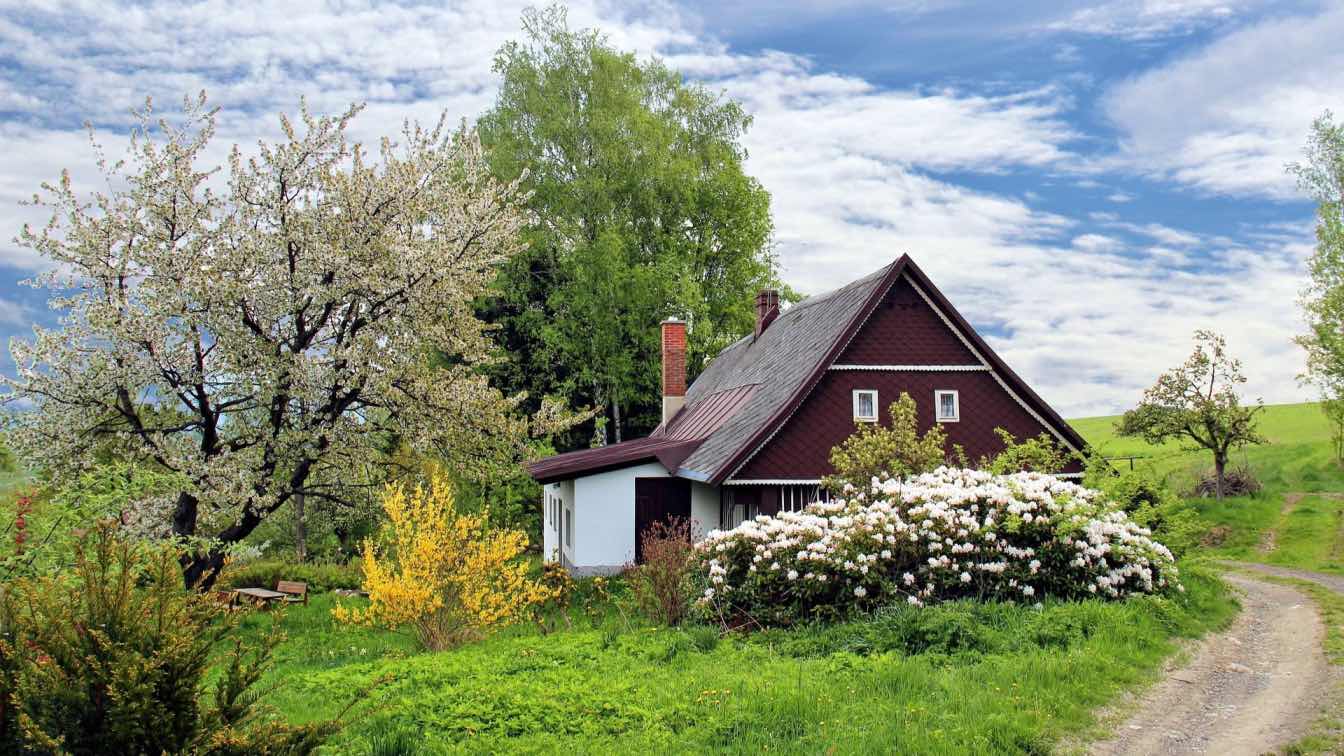In North America, some golf courses transcend their role as venues for sport and become iconic destinations, celebrated for their artistry and design. From an architectural standpoint, these courses blend ingenuity with the natural environment, demonstrating how human creativity paired with thoughtful craftsmanship can transform ordinary spaces into extraordinary experiences.
Whether you’re a passionate golfer or someone who appreciates remarkable design, these courses offer a journey through innovation, tradition, and natural beauty.
Photo by Jopwell on Pexels
Pebble Beach Golf Links, California
Synonymous with coastal beauty, this course offers sweeping views of the Pacific Ocean, a feature many travelers are eager to see, that are as challenging as they are mesmerizing. The course’s layout showcases how strategic design can complement natural terrain.
Every hole on such a terrain presents a unique challenge, requiring precise calculations and adaptability to unpredictable coastal winds. Playing Pebble Beach is an experience that resonates with golfers of all levels, connecting them to the rugged elegance of its surroundings.
Cliffside Challenges and Spectacular Vistas
Situated along the cliffs of Carmel Bay, Pebble Beach offers golfers a breathtaking stage. Every swing feels heightened by the dramatic proximity of the ocean, where the fairways and greens seem to merge with the water.
The course’s intricate design demands players navigate the elements while appreciating the beauty of their surroundings.
Even the attire of golfers can enhance the elegance of this iconic setting—complementing the sophistication and challenge of the course. From traditional polos and tailored pants to wind-resistant jackets, what people wear golfing reflects their preparation for both the elements and the prestigious atmosphere.
The Masterminds Behind the Vision
Designed in 1919 by Jack Neville and Douglas Grant, Pebble Beach was meticulously planned to maximize views of the Pacific Ocean. Their pioneering vision prioritized both aesthetic appeal and the strategic complexity of the course.
Over the decades, these original principles have remained intact, allowing Pebble Beach to retain its status as a masterpiece of golf course architecture.
A Course of Legends
Pebble Beach has been the site of numerous major championships, including the prestigious U.S. Open. Its storied history is matched only by its timeless design, offering a unique combination of natural beauty and technical difficulty. For players, it represents more than a challenge—it’s an opportunity to connect with over a century of golfing heritage.
Bandon Dunes, Oregon
Bandon Dunes is a testament to minimalist design, where the course seems to emerge naturally from the rugged coastal landscape. Its architects embraced the raw contours of the land, creating a layout that feels as timeless as the surrounding Pacific shoreline. Every aspect of the course invites players to immerse themselves in an authentic and unforgettable golfing experience.
Links-Style Perfection
Modeled after the classic links courses of Scotland and Ireland, Bandon Dunes features wide fairways framed by native grasses and natural dunes. The undulating greens and strategically placed hazards encourage players to approach each hole with creativity and strategy. The course’s organic design fosters a sense of connection between the player and the land, enhancing every shot.
Designed to Feel Timeless
Architect David McLay Kidd crafted Bandon Dunes to evoke the spirit of traditional golf while respecting the unique character of the Oregon coast. By using indigenous vegetation and working with the existing terrain, Kidd ensured the course would age gracefully and remain relevant for generations. Each round played here feels like a journey into the past, where the essence of golf’s origins is celebrated.
A Journey Through Nature
The proximity of Bandon Dunes to the Pacific Ocean heightens the sensory experience of every round. Coastal winds add a layer of complexity, requiring players to adjust their strategy and technique. Beyond the game, the course offers an unparalleled opportunity to engage with the raw beauty of its environment, making each visit a retreat into nature.
Pinehurst No. 2, North Carolina
Designed by Donald Ross, the course is a masterpiece of strategic depth, requiring players to prioritize skill and precision over brute force. Its enduring design has earned it a place in the pantheon of great golf courses, with a reputation for challenge and beauty.
Ross’s vision for Pinehurst No. 2 emphasized clean lines and minimalism, using sparse vegetation and sandy waste areas to contrast with the lush greens. The course’s understated design belies its complexity, with subtle contours and nuanced hazards that demand thoughtful play. Its beauty lies in its ability to challenge players while remaining visually striking.
A Legacy of Excellence
Donald Ross dedicated decades to refining Pinehurst No. 2, ensuring every detail served his vision of a strategic yet accessible course. His innovations set a benchmark for golf course design, influencing countless architects who followed. Today, Pinehurst No. 2 remains a testament to Ross’s dedication and creativity.
Host to Golf’s Great Moments
Pinehurst No. 2 has been the stage for numerous iconic tournaments, including the U.S. Open and Ryder Cup. Its reputation as a premier championship course is well-earned, offering a balance of difficulty and reward that draws players and spectators from around the world. Each hole represents a piece of golf history, making it a pilgrimage for enthusiasts.
Whistling Straits, Wisconsin
Whistling Straits transforms the shores of Lake Michigan into a dramatic and visually stunning golfing arena. Designed by Pete Dye, the course mimics the rugged links of Ireland while incorporating uniquely American elements. Its bold contours and striking features create a playing experience that is as challenging as it is awe-inspiring.
A Modern Links Marvel
Whistling Straits is characterized by its rolling terrain, steep bunkers, and windswept fescue grasses. The course’s design challenges players to think strategically, rewarding precision and creativity. By blending traditional link elements with innovative features, Dye created a course that feels both classic and contemporary.
Sculpted With Precision
The dramatic features of Whistling Straits were carefully engineered by Dye and his team, who moved vast amounts of earth to create its signature undulations and hazards. This meticulous attention to detail ensures that every aspect of the course contributes to its unique identity, offering players a dynamic and engaging experience.
Home of Iconic Championships
From hosting PGA Championships to the Ryder Cup, Whistling Straits has cemented its place among the world’s elite courses. Each tournament here underscores the course’s ability to test even the most skilled players. Its reputation continues to grow, attracting those who seek to experience its unparalleled challenges firsthand.
Cabot Cliffs, Nova Scotia
Cabot Cliffs, perched high above the Atlantic Ocean, offers one of North America’s most breathtaking golf experiences. Designed by Bill Coore and Ben Crenshaw, the course harmonizes with the dramatic cliffs and rolling terrain, creating a layout that feels both innovative and timeless. Its remote location adds to its allure, offering players a sense of exclusivity and escape.
Each hole at Cabot Cliffs is a masterpiece, showcasing the interplay of coastal winds, panoramic ocean views, and rolling fairways. The designers incorporated the natural contours of the cliffs into the course’s layout, creating a series of challenges that are as rewarding to play as they are to behold. Every swing is accompanied by the beauty of Nova Scotia’s untamed coastline.
Innovation Meets Tradition
Coore and Crenshaw balanced modern design techniques with the timeless principles of golf course architecture, creating a course that feels fresh yet rooted in tradition. Their use of native materials and thoughtful landscaping enhances the authenticity of the experience. Cabot Cliffs is a testament to how contemporary courses can honor the game’s storied past.
A Destination for Golf Purists
For those who appreciate the artistry of golf course design, Cabot Cliffs is more than a destination—it’s a pilgrimage. The course’s integration of natural features and strategic challenges makes it a benchmark for excellence. Each round played here is a reminder of the creativity and passion that define the sport at its best.
Conclusion
North America’s most architecturally stunning golf courses are works of art that elevate the sport to new heights. From the cliffs of Nova Scotia to the shores of California, these courses showcase the ingenuity of their designers and the beauty of their surroundings. Each tells a story of vision and ambition, offering players an experience transcending the sport.
Whether you’re pursuing the perfect round or marveling at the design, these courses invite you to get to know a world where nature and creativity converge.





